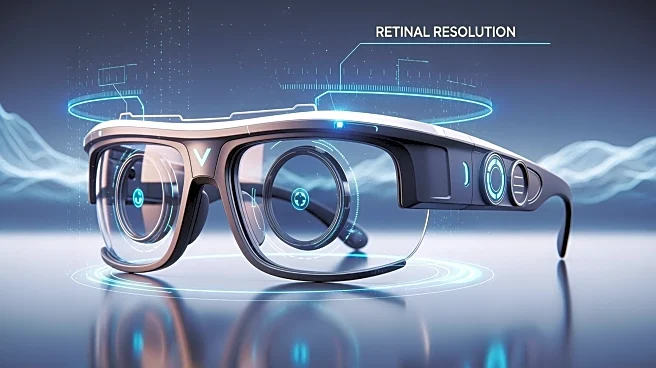What's Happening?
Meta has introduced the Aria Gen 2, a new augmented reality headset equipped with a PPG heart-rate sensor and contact microphone, designed to enhance biometric data collection for research purposes. Launched
on February 27, 2025, the device weighs 75 grams and offers up to 8 hours of battery life, facilitating extended field studies. The inclusion of biometric capabilities allows researchers to capture physiological signals alongside traditional eye and hand tracking, transforming AR research from observational to physiological measurement.
Why It's Important?
The Aria Gen 2 represents a significant advancement in wearable technology, particularly for research applications. By integrating biometric sensors, Meta enables labs to conduct more comprehensive studies on stress, attention, and health signals without the need for separate wearables. This development could accelerate research timelines and reduce costs, while also raising important questions about privacy and consent in the collection of continuous physiological data. Institutions and companies will need to address these concerns as they adopt the new technology.
What's Next?
As Meta's Aria Gen 2 becomes available to academic and commercial labs, there will likely be increased demand for updated consent forms and data protection measures to safeguard subjects' rights. The device's capabilities may lead to faster prototyping for studies on accessibility, mental health, and attention tracking. Researchers and institutions will need to establish guidelines for the ethical use of biometric data collected through AR devices.
Beyond the Headlines
The introduction of biometric sensors in AR headsets could redefine the landscape of wearable technology, shifting its role from novelty to essential research tool. This evolution may prompt discussions on the ethical implications of biometric data collection and the responsibilities of researchers in protecting subject privacy. The technology could also pave the way for new applications in healthcare and accessibility, offering insights into human physiology and behavior.











